Nativity Stained Glass Window
Organization: North Shore Community Association
Coordinates: www.quebecnorthshore.org
Address: 39 Marquette, Local 314, Baie-Comeau QC G4Z 1K4
Region: North Shore & Lower North Shore
Contact: Jody Lessard, nsca(a)quebecnorthshore.org
Description: Stained glass window located in the Church of St. Andrew & St. George, Baie Comeau, Quebec.
Year made: 1938
Made by: Clara Fargo Thomas
Materials/Medium: Coloured glass, iron
Colours: Multi-coloured
Provenance: Colonel Robert R. McCormick, Baie-Comeau, Quebec
Size: 3.04 m x 2.1 m
Photos: Rachel Garber. Courtesy Church of St. Andrew & St. George, North Shore Community Association
Nativity Stained Glass Window
Jacqueline Hyman and Jody Lessard
Described as a “true Quebec religious heritage treasure” by the North Shore Community Association, the stained glass Nativity window designed by Clara Fargo Thomas of New York reflects the presence and influence of the English-speaking community in the North Shore region of Quebec. Commissioned by the powerful Chicago businessman, Colonel Robert R. McCormick (1880-1955), this stunning window is located in the Tudor style Anglican Church of St. Andrew and St. George in Baie-Comeau, Quebec. Colonel McCormick, who founded the town of Baie-Comeau in 1936, donated the window in memory of his wife, Amy Irwin McCormick. It was installed in the church sanctuary in 1938.
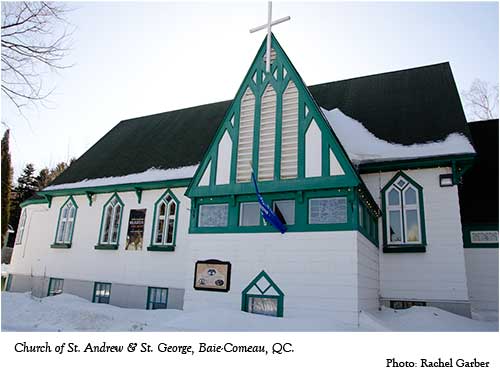
This window is one of several exceptional stained glass windows in the church. McCormick’s window measures 3.04 metres x 2.1 metres, with a heavy oak frame. It presents a nativity scene and is unique in its depiction of the wildlife of the North Shore. One can see many animals indigenous to the region including caribou, wolf, bear, duck, moose, and trout, all paying homage to the Christ Child. Also depicted in the lower left corner is “Ti-Basse” St-Onge, a Montagnais man who once saved the life of Colonel McCormick, and with whom he formed a lifelong relationship.
The window, and the story of the man who commissioned it, convey many aspects of the identity of the English-speaking community in the region. The Holy window reflects the importance of religion and the Church in their lives. Even though the English-speaking community in Baie-Comeau has been declining in numbers since the 1970s, the church is still a centre of social and community activity, as well as the spiritual heart of the lives of its members. In addition, the church draws people to its sanctuary because it is a place where a collection of objects significant to the English-speaking heritage of the community are housed.
The story of this window also gives an understanding of the history of the economic development of the community, which is tied inextricably to the life of Colonel McCormick. McCormick, the wealthy American publisher of the Chicago Tribune, established the town of Baie-Comeau in 1936 and settled it with an English-speaking managerial class of professionals. To furnish his paper with newsprint, McCormick licensed rights to exploit thousands of acres of spruce-wood in the Manicouagan River watershed, constructed a giant pulp and paper mill to make the newsprint, and built a hydroelectric power plant to generate electricity for the mill in Baie-Comeau. These enterprises drew many other businesses to the region. The small English-speaking community included many mill managers, and later on, workers for the grain-shipping port and the Canadian British Aluminum smelter, which was established in the 1950s. Although he was an American publisher and businessman, his legacy in Canada includes the six towns he established for the purpose of forestry and paper production: Heron Bay, Gore Bay, and Thorold, in Ontario, and Baie-Comeau, Franquelin, and Shelter Bay (known today as Port-Cartier) in Quebec.
McCormick was a visionary and a shrewd businessman. Described as an aristocratic and egotistical millionaire, he had the means to satisfy his tastes and his whims. His fingers were in many pies, both financial and political. His accomplishments included acquiring a number of large American newspapers, creating his newsprint empire, and fronting his cousin in American politics. He was an isolationist strongly opposed to the U.S. entry into World War II, and was vehemently against Franklin Delano Roosevelt’s “New Deal.” After serving as a Colonel with the Illinois National Guard during World War I, he received a commission as Major in the First Cavalry. In 1916 he served with Brigadier General John J. Pershing in the American conflict with Pancho Villa’s Mexican Revolution. Realizing that weaponry was in too short supply and frustrated by the lack of response by the American army, McCormick supplied his troops with machine guns, ammunition and vehicles through significant personal contributions.
Although this was not generally known about him, McCormick was an outdoor enthusiast and was happiest travelling and exploring in the wild regions of the North Shore. Many statues have been erected in his honour throughout the territory, including a bronze statue of the Colonel canoeing in 1915. That was the year he discovered the land that would become the future site of Baie-Comeau. The monument stands proudly beside the pulp and paper mill he established.
This extraordinary stained glass window, commissioned by its equally extraordinary benefactor, can be viewed at the Church of St. Andrew and St. George at 34 Carleton Avenue for six weeks during the summer months when a guided tour is offered, and occasionally throughout the year.
Sources
Robert R. McCormick, http://en.wikipedia.org/wiki/Robert_R._McCormick
Robert R. McCormick Museum, www.cantigny.org
To Learn More
Richard Norton Smith, The Colonel: The Life and Legend of Robert R. McCormick, 1880-1955, 2003.
Gwen Morgan and Arthur Veysey, Poor little rich boy (and how he made good):The life and times of Colonel Robert R. McCormick, 1985.
Charles M. Madigan, Robert R. McCormick: A Celebration of His Life and Legacy. The History of the McCormick Tribune Foundation, 2005.
North Shore Heritage Trail, www.quebecheritageweb.com
Authors
Jacqueline Hyman is a writer and lives in the Eastern Townships. She is a member of the Board of Directors of the Eaton Corner Museum in Cookshire-Eaton, Quebec. Jody Lessard is the Executive Director of the North Shore Community Association.


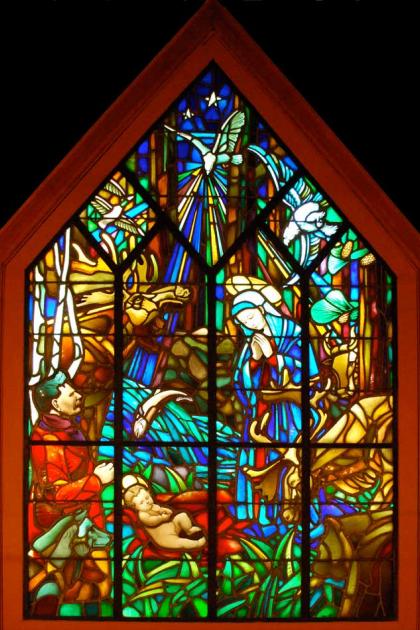
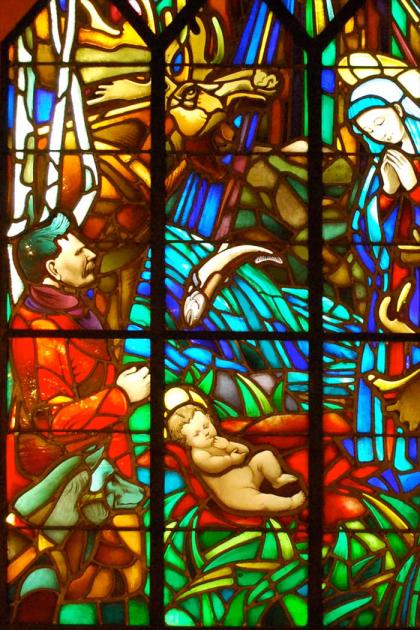
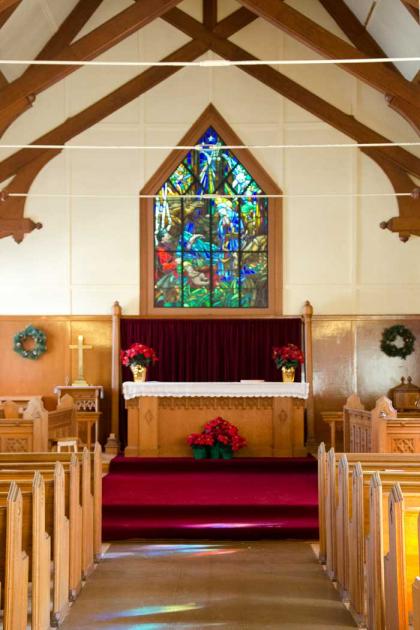
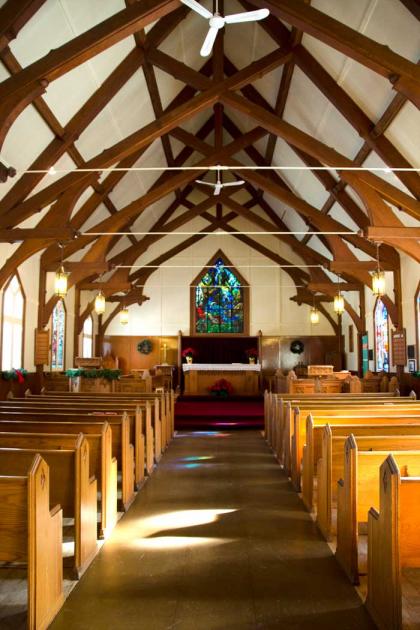
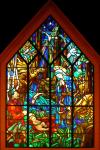
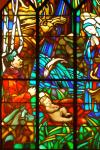
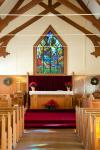
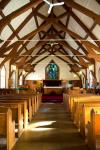
Comments
Picture
I was wondering if someone couod take a picture of the sign near the road in front of the church. it has a picture of a minister and several children who just receive confirmation I. I happen to be one of the girls in the picture, but my camera was lost in Baie Comeau the last time I was there in 2004, and therefore do not have a picture. My email address is mossman [at] shaw.ca
Thank you so very much. I would be very grateful, if someone couod do this.
Carey (McKinley) Mossman
Add new comment